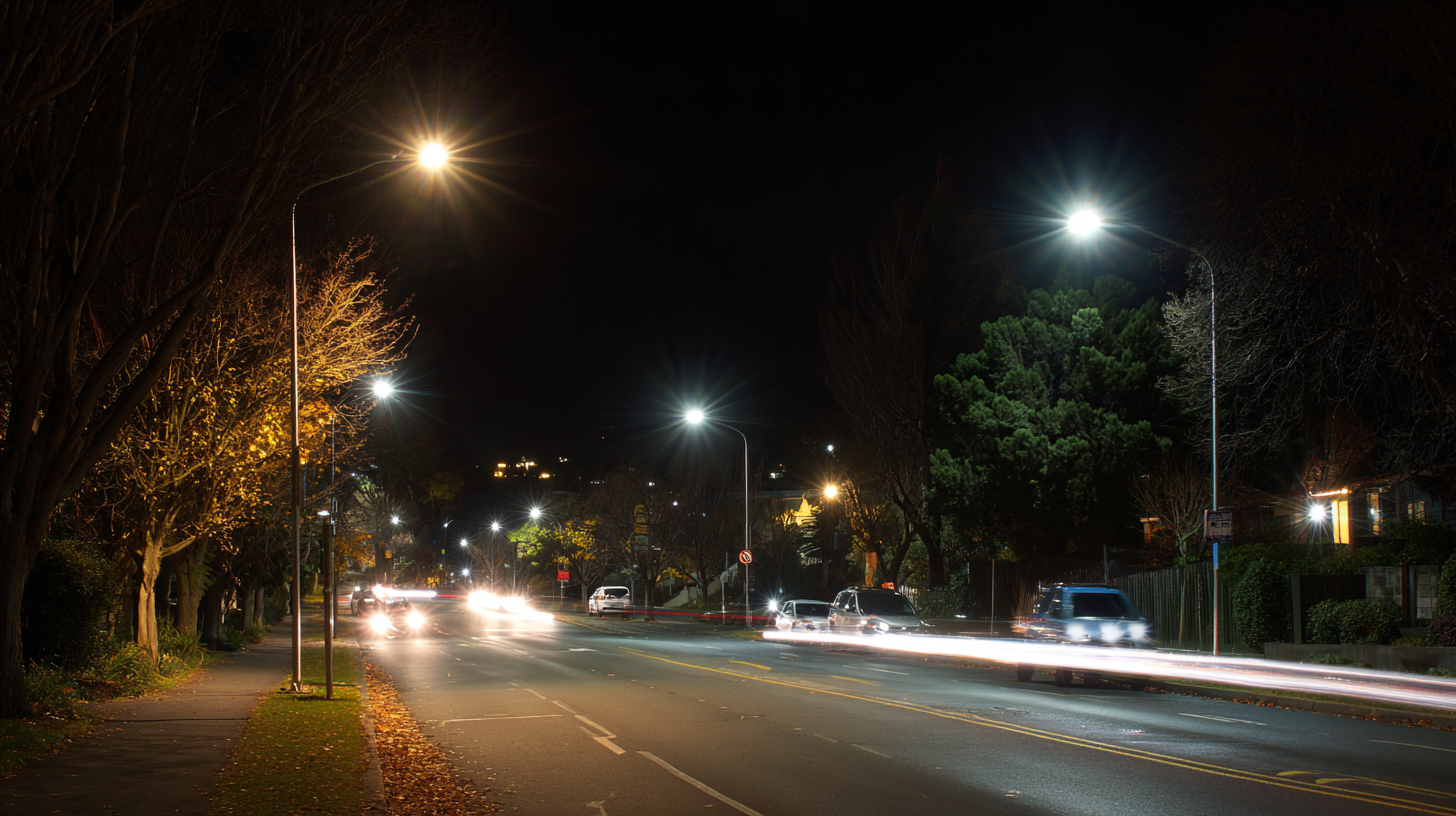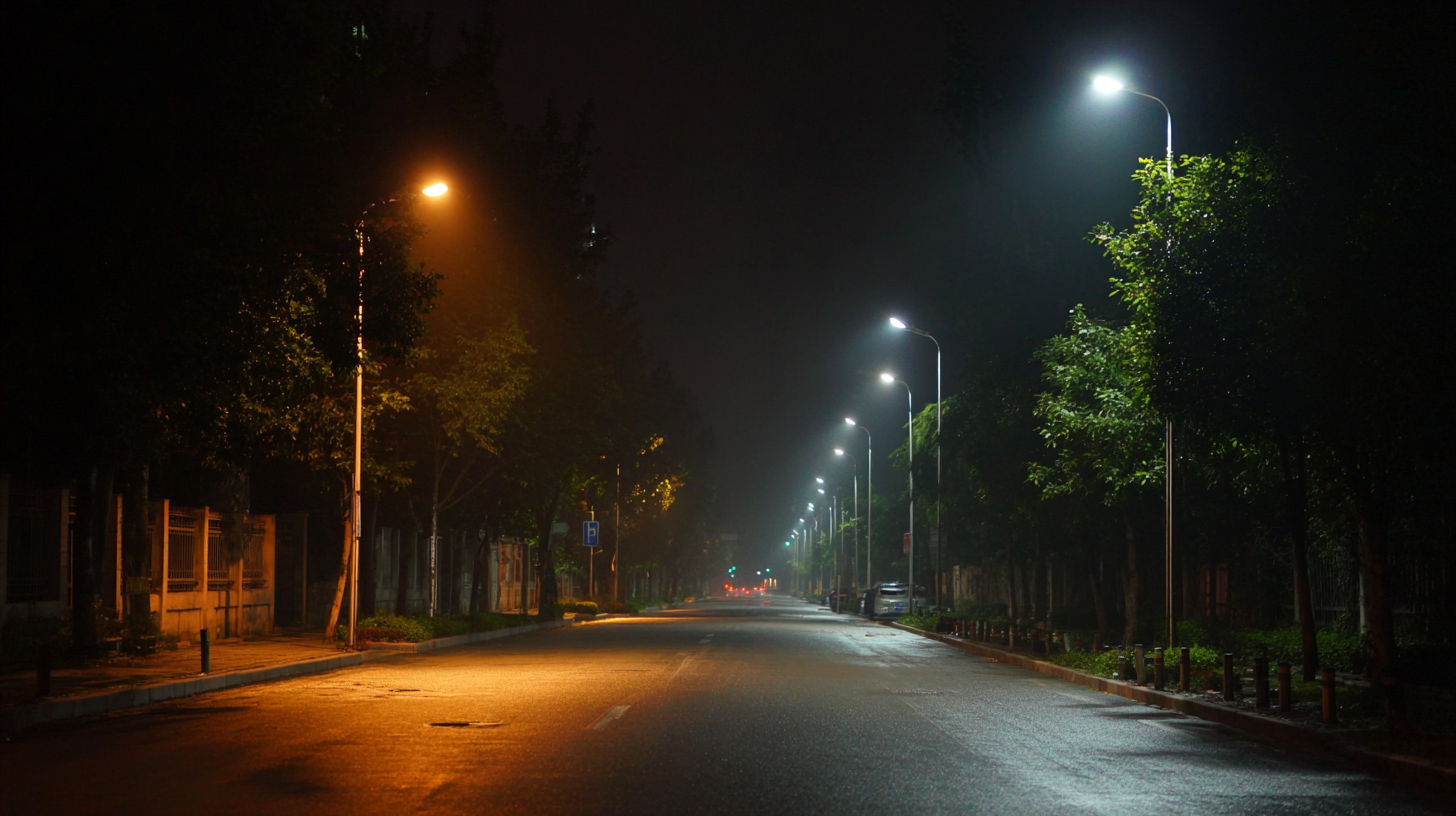Revolutionizing Urban Safety: The Impact of Smart Street Lighting on Community Well-being
Urban areas are increasingly turning to smart street lighting solutions as a means of enhancing community safety and well-being. According to a report by the International Energy Agency (IEA), over 300 million street lights are currently in operation globally, consuming nearly 19% of municipal energy budgets. Traditional street lighting systems often lack the ability to adapt to changing conditions, resulting in inefficiencies and safety concerns. However, the advent of smart street lighting technologies, which can be integrated with sensors and connectivity, has the potential to revolutionize urban safety. A study from the Urban Institute found that cities implementing smart lighting solutions experienced a 20% reduction in crime rates in well-lit areas. As urban populations continue to grow, the demand for innovative solutions to improve safety and enhance community well-being becomes paramount, positioning smart street lighting as a transformative force in urban design and public policy.

Understanding Smart Street Lighting and Its Features
 Smart street lighting systems are transforming urban environments by integrating advanced technology to enhance community well-being. These systems utilize LED technology combined with IoT sensors to provide adaptive lighting based on real-time conditions. For instance, a report by the Global Smart Lighting Market has projected that the smart street lighting market will reach $17 billion by 2025, emphasizing the rapid growth and investment in this sector. Such systems not only improve visibility and safety in public spaces but also contribute to energy savings of up to 60%, which can significantly lower municipal costs.
Smart street lighting systems are transforming urban environments by integrating advanced technology to enhance community well-being. These systems utilize LED technology combined with IoT sensors to provide adaptive lighting based on real-time conditions. For instance, a report by the Global Smart Lighting Market has projected that the smart street lighting market will reach $17 billion by 2025, emphasizing the rapid growth and investment in this sector. Such systems not only improve visibility and safety in public spaces but also contribute to energy savings of up to 60%, which can significantly lower municipal costs.
In addition to energy efficiency, smart street lighting features such as motion detection, remote management, and data collection play a crucial role in urban safety. These lights can automatically brighten when they detect movement, thereby deterring criminal activities and enhancing the sense of security within communities. According to a study by the Institute of Transportation Engineers, cities that have implemented smart street lighting have reported a 30% decrease in crime rates. Furthermore, the data collected from these systems can help city planners make informed decisions about where additional lighting may be needed, further bolstering public safety and improving overall community well-being.
Assessing the Benefits of Smart Lighting for Urban Safety
Smart street lighting represents a significant advancement in urban infrastructure, particularly in enhancing community safety. By integrating technologies such as artificial intelligence and machine learning, cities can analyze real-time data to optimize lighting conditions based on pedestrian and vehicular activity. According to a recent report by the International Energy Agency, smart lighting solutions can reduce energy consumption by up to 50%, while also improving visibility and safety in urban areas. This shift not only fosters a sense of security among residents but also encourages nighttime economic activities, benefiting local businesses.
Furthermore, studies have shown that well-lit streets can reduce crime rates substantially. Research from the Urban Institute indicates that neighborhoods with improved lighting saw a 20% decrease in reported incidents of crime. As urban areas increasingly adopt smart lighting systems, they not only invest in energy efficiency but also in the overall well-being of their communities. By creating safer environments through intelligent lighting solutions, cities can enhance their appeal and livability, ultimately contributing to a higher quality of life for their residents.
Revolutionizing Urban Safety: The Impact of Smart Street Lighting on Community Well-being
| Benefit Dimension | Description | Estimated Impact (%) |
|---|---|---|
| Crime Reduction | Increased visibility deters criminal activities during nighttime. | 30% |
| Pedestrian Safety | Improved lighting enhances the safety of pedestrians crossing streets. | 25% |
| Increased Community Engagement | Well-lit areas encourage more people to participate in outdoor activities. | 20% |
| Energy Efficiency | Smart LED lighting reduces energy consumption compared to traditional lighting. | 40% |
| Environmental Impact | Lower energy consumption contributes to reduced greenhouse gas emissions. | 35% |
Integrating Technology: How Smart Lighting Enhances Community Engagement
The integration of smart lighting systems in urban environments significantly enhances community engagement, revolutionizing how neighborhoods interact and thrive. By incorporating technology, smart street lighting not only improves safety but also fosters a sense of community ownership and participation. Research from the Journal of the Knowledge Economy highlights that co-creating urban spaces with citizen input drives innovation in smart sustainable cities, ultimately leading to improved quality of life. These interactive lighting systems can be programmed for public events, fostering gatherings and sparking conversations among residents, thus nurturing social connections.
Moreover, initiatives in cities like Pattaya demonstrate the potential of smart technologies to amplify community well-being. The focus on resident engagement and the effective use of public data underscores the necessity for inclusive urban development strategies. As smart cities leverage technology to enhance communication and infrastructure, the role of community participation becomes pivotal. Data-driven approaches not only guide the implementation of these systems but also ensure they resonate with the residents’ needs, creating a more connected and dynamic urban landscape that thrives on collaboration.
Revolutionizing Urban Safety: The Impact of Smart Street Lighting on Community Well-being
Evaluating the Impact of Smart Lighting on Crime Reduction
Smart street lighting is emerging as a transformative solution for enhancing urban safety and reducing crime rates in communities. By utilizing energy-efficient LED technology and intelligent sensors, these systems not only provide well-lit streets but also adapt to the presence of people and vehicles. The dynamic adjustment of brightness based on real-time data not only conserves energy but also creates a sense of vigilance among residents, which can deter potential criminal activities.
Studies have demonstrated a direct correlation between improved street lighting and a decrease in crime rates. Areas equipped with smart lighting systems report fewer incidents of vandalism, theft, and violent crimes. The psychological impact of brighter, well-lit environments fosters a feeling of safety among community members, encouraging them to engage more actively in outdoor activities. As municipalities invest in smart street lighting, they are not only enhancing the aesthetic appeal of their neighborhoods but are also taking significant strides towards building safer, more vibrant communities.
Future Trends in Smart Street Lighting for Urban Environments
Smart street lighting is set to transform urban landscapes, not only by improving safety but also by laying the foundations for future technological advancements. As 5G networks become increasingly prevalent, the demand for densely positioned infrastructure is rising. Streetlights are poised to serve as optimal hosts for 5G base stations due to their strategic positioning and existing electrical connectivity. This integration could enhance connectivity while minimizing the aesthetic and spatial burden of additional antennas on buildings or poles.

Moreover, smart street lights are evolving into multifunctional hubs within urban environments. Equipped with advanced sensors and connectivity features, they can simultaneously provide illumination, monitor air quality, and facilitate emergency communications. This “intelligent energy convergence” transforms them into essential nodes of urban smart city developments, fostering not only safety but also facilitating community engagement and awareness.
Tips: When assessing the installation of smart street lighting in your area, consider how they can integrate with existing infrastructure. Collaborate with local authorities to explore funding opportunities for smarter, safer urban environments. Always emphasize the potential benefits to community safety and environmental impact while advocating for these systems.
Related Posts
-

Ultimate Guide to Choosing the Best Sidewalk Lighting Solutions for Your Needs
-

7 Best Benefits of Using Led Lamps for Your Home and Business
-

Unmatched Quality in Best Leading Lighting Driven by Trusted Chinese Manufacturing Excellence
-

Innovations Shaping the Future of Industrial Lighting in 2025
-

Exploring the Unique Features and Applications of the Best Led Lighting Solutions
-

Unwavering Quality of Best Solar Street Lights Crafted in China Trusted Worldwide
